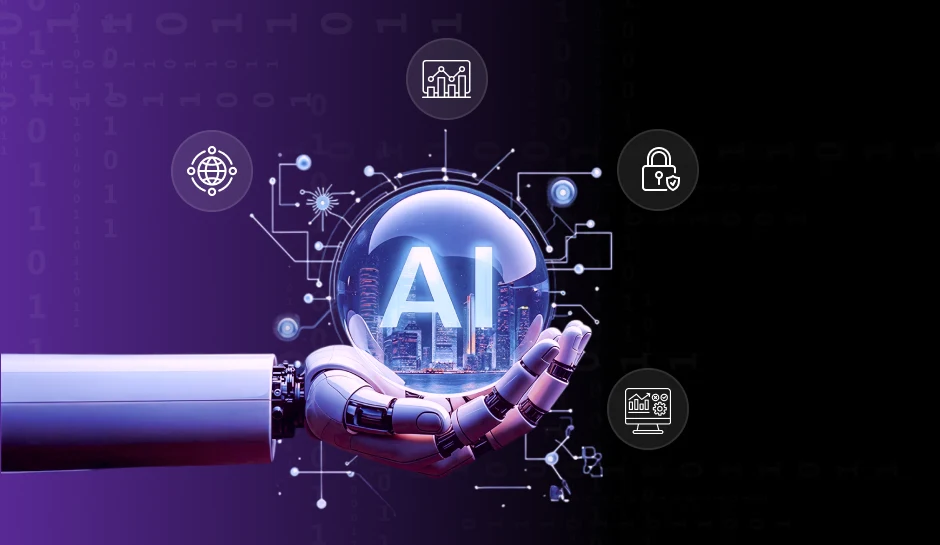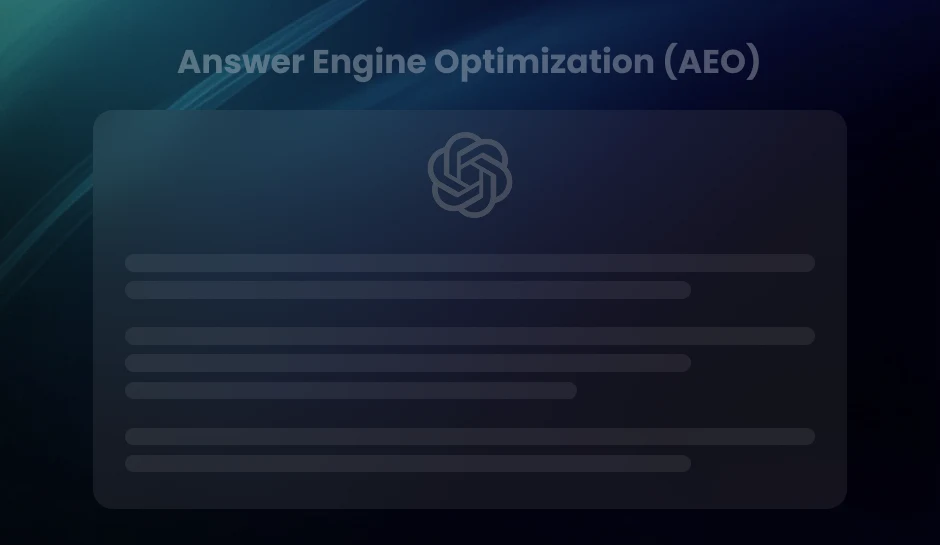
How Machine Learning Is Reinventing Google Attribution Models
Attribution in modern marketing isn’t just about assigning credit—it’s about understanding influence. With machine learning powering Google Attribution, marketers gain a clearer picture of how each interaction shapes the path to conversion, across channels and devices. This advanced modeling goes beyond clicks and impressions to provide deeper, real-time insight into what truly drives performance.
How do you measure the true impact of every touchpoint in a complex customer journey?
Many businesses still rely on outdated attribution models that give credit to only one interaction. This creates a distorted view of what actually drives conversions.
Marketing teams often struggle with disconnected data, fragmented user paths, and unclear performance signals. These issues lead to inefficient spend, missed opportunities, and misleading return metrics.
Machine learning in Google attribution solves these problems by analyzing the entire path to conversion. It identifies patterns, evaluates contributions, and distributes credit with far greater precision.
With machine learning in Google attribution, businesses can make informed decisions that align spend with actual impact. This shift turns attribution from a basic report into a core performance tool.
What Machine Learning In Google Attribution Actually Does
Machine learning in Google attribution introduces a data-driven approach to credit distribution. It eliminates static assumptions and evaluates every user interaction to understand what truly drives conversions.
Unlike traditional models that assign value to the first or last touchpoint, this approach uses behavioral data to analyze how each step contributes to the final outcome. It tracks user journeys across devices, channels, and timeframes to map influence accurately.
The algorithm learns from historical data. It identifies which combinations of touchpoints most often lead to conversions. As user behavior shifts, the model adapts without manual configuration. This ensures that credit assignment stays aligned with real engagement patterns.
The technology also accounts for delayed conversions, multi-session behavior, and non-linear journeys. It does not just highlight the most frequent touchpoints but evaluates their true impact on customer decisions.
By using machine learning in Google attribution, businesses can shift from surface-level reporting to actionable insights. It improves return on ad spend, refines media planning, and supports better strategic choices. Marketing leaders gain clarity on what works and where to reinvest.
This system builds an attribution model that evolves with your audience—offering the precision needed for today’s complex marketing environments.
Redefining Attribution Logic With Machine Learning
Attribution has long been a point of friction in marketing analytics. Traditional models, like first-click or last-click, simplify complex user journeys into linear interactions. These methods misrepresent actual influence, reward visible but shallow actions, and overlook the role of early-stage engagement.
Machine learning in Google attribution introduces a more intelligent system. It uses historical data, behavioral signals, and pattern recognition to assign value based on real contribution. The model evolves with user behavior, helping businesses align spend with true impact.
How Machine Learning Learns Attribution Patterns
Understanding the customer journey requires more than listing steps. Machine learning identifies and learns from repeated patterns that lead to conversions.
- Collects large-scale user interaction data across campaigns, devices, and platforms
- Recognizes behavioral sequences that precede or predict conversion
- Measures time delay, order of exposure, and path complexity
- Continuously updates based on new data, trends, and interactions
This approach creates a living model that reflects how buyers actually behave, not how marketers assume they behave.
Credit Assignment Through Data-Driven Attribution
Accurate attribution requires more than dividing credit equally or favoring the final click. Machine learning, using advanced modeling, estimates the marginal contribution of each touchpoint.
- Assigns value based on statistical contribution rather than visibility or order
- Accounts for indirect influences like display views or early search interactions
- Highlights undervalued steps that assist later conversion behavior
- Delivers campaign-level granularity for smarter performance analysis
This enables a better understanding of where to invest and how to maximize return at each funnel stage.
Role Of Google’s Algorithmic Advances
Google has integrated advanced machine learning techniques into its attribution ecosystem. These tools go beyond simple tracking to simulate and evaluate cause-effect relationships.
- Uses counterfactual modeling to test what happens without a specific interaction
- Applies probabilistic models to predict likely conversion outcomes
- Adapts in real-time using Google Ads and GA4 data streams
- Aligns attribution logic with real user journeys across the entire Google ecosystem
These advancements make machine learning in Google attribution not just a reporting upgrade, but a strategic asset that drives decision-making, planning, and profit.
The Rise of Machine Learning in Marketing Analytics
Forget spreadsheets and intuition. Machine learning has shifted marketing analytics from backward-looking reporting to forward-driving intelligence. By continuously learning from vast datasets, these systems identify patterns, refine models, and generate insights marketers can’t match manually. In practical terms, this means anticipating consumer behaviors, optimizing campaigns in real-time, and customizing messaging at an individual level—all without human intervention.
In platforms like Google Attribution, machine learning adapts to each business context. The algorithms evaluate user interactions across devices and channels, assigning value to marketing touchpoints based not on assumptions, but on statistical probability. This creates a clearer picture of what drives conversions—and what doesn’t.
Where Data Analysis Meets Machine Precision
Businesses have always analyzed data. Machine learning changes the depth, speed, and impact of this process. Machine learning dynamically identifies which signals matter most instead of relying on predefined KPIs or manual segmentations.
It doesn’t just answer: “What happened?” It answers: “Why did it happen?” and “What will happen next?”
Marketers using Google’s attribution tools aren’t just pulling reports—they’re leveraging trained neural networks that take into account hundreds of variables per interaction. These models process structured and unstructured data alike: click paths, session durations, ad views, and even timing patterns. As new data flows in, attribution models retrain themselves automatically, improving accuracy with scale.
- Scale without compromise:
- Nonlinear decision patterns:
- Dynamic model evolution:
Machine learning processes millions of interactions without loss of fidelity, uncovering relationships that human analysts would miss.
It recognizes that today’s customer journey isn’t step-by-step, but chaotic and non-linear. The models reflect this reality.
As behaviors shift—say, after a product launch or seasonal change—the attribution model updates itself without reprogramming.
Machine learning has moved analytics from reaction to prediction. In doing so, it has changed how marketers think—not just about measurement, but about strategy.
Inside Google Attribution: How Machine Learning Deciphers the Customer Journey
How Algorithms Analyze Behavior to Assign Value Accurately
Google implements a data-driven attribution model powered by its proprietary machine learning infrastructure. These algorithms observe the complete sequence of user interactions and assign fractional credit to each touchpoint involved in the conversion sequence. The system trains itself using anonymized conversion and non-conversion paths, drawing insights from billions of events within the Google Marketing Platform.
- Sequence Evaluation:
- Comparative Influence:
- Adaptive Modeling:
The algorithm evaluates the chronological order of touchpoints, recognizing which interactions consistently precede conversions.
It learns how different paths (with and without a particular ad interaction) affect the likelihood of a user completing a desired action.
As campaign dynamics shift, the model recalibrates. Recent data weighs more than older patterns, enabling responsiveness to new user behavior.
This assessment process isn’t static. For each advertiser, the model customizes itself using the brand’s own historical conversion data. It doesn’t treat all conversions the same—nor does it generalize across industries. Instead, it creates a bespoke attribution fingerprint optimized for that specific account.
What Makes Google’s Approach Stand Out?
Most attribution models focus on simplistic time-based logic or predefined position-based rules. Google Attribution discards that rigidity. For instance, if users who see three YouTube ads and later click a paid search ad frequently convert, the system detects that pattern—even if the search click is always last in line. Credit, in that scenario, flows proportionally to the influence of each contributing touchpoint, assessed through statistical models like Markov chains and Shapley values.
This algorithmic analysis delivers attribution that aligns with actual consumer behavior, not assumptions. It doesn’t reward only the final nudge, but the entire journey that made the nudge matter.
How AI-Powered Attribution Tools Transform Marketing Outcomes
Enhancing Marketing Efforts with AI and Machine Learning
Marketing teams using AI-powered attribution tools experience measurable efficiency gains, both in campaign execution and strategic alignment. Google Attribution, backed by machine learning models, analyzes massive datasets at a scale and speed that outperforms human-led methods. These tools don’t just organize data—they reveal patterns hidden in complex customer journeys across platforms, devices, and ad formats.
Traditional attribution models, like last-click, apply fixed rules. By contrast, AI dynamically assesses each interaction’s impact on a conversion, based on real-time behavioral signals. The result is a more precise understanding of which marketing activities deserve credit. According to Google internal data, businesses using data-driven attribution models built on machine learning report up to 35% more conversions at the same cost.
Automated insights empower marketers to refocus budgets on high-performing touchpoints. Channels that appear low-value under rule-based models often receive greater investment thanks to the context AI provides. Campaigns become more responsive, agile testing increases, and optimizations are no longer based on guesswork—they’re calibrated by algorithms that learn from outcomes.
Integrating Predictive Analytics into Marketing Strategies
Machine learning doesn’t only explain the past; it forecasts what’s next. Google Attribution models incorporate predictive analytics to anticipate future user behavior. Rather than reacting to performance after the fact, marketers use model-based forecasts to modify campaigns proactively. This predictive edge enables decisions that capture potential value before competitors do.
- Audience Quality Forecasting:
- Budget Reallocation:
- Creative Testing Acceleration:
AI evaluates which user cohorts are most likely to convert, helping teams prioritize spend accordingly.
Predictive signals indicate when to shift investment between campaigns or channels, even before performance diverges visually.
Algorithms assess early signals from A/B tests to scale effective messaging faster and retire underperforming variants.
Pro Tip – These capabilities support a strategy where real-time action turns predictive data into a competitive advantage. Marketers move from reactive analytics to prescriptive, future-oriented campaign design, delivering sustained ROI growth without increasing spending.
Boosting ROI with Machine Learning Insights in Google Attribution
Maximizing Returns Through Algorithmic Precision
Machine learning models in Google Attribution don’t just analyze—they uncover actionable patterns. By processing massive volumes of multichannel data, these models expose underperforming tactics and highlight high-conversion segments that manual analysis constantly misses. Marketers can reallocate budgets based on actual contributions rather than flawed assumptions or last-click biases.
For example, Google’s data-driven attribution (DDA), powered by machine learning, evaluates how every touchpoint contributes to a conversion. Instead of assigning full credit to the final interaction, it distributes value across the journey using a probabilistic model. The more data funneled through the model, the sharper its predictive edge becomes.
Optimizing Strategy with AI-Enhanced Decision-Making
Take the guesswork out of campaign optimization. Google Attribution’s machine learning capabilities assess both the quantity and quality of user interactions. Rather than focusing on raw clicks or impressions, these models look at behavioral indicators—session duration, page depth, bounce rates—and quantify their relevance to conversion paths.
This analytical depth translates into smarter audience segmentation. Instead of casting a wide net, marketers hone in on high-intent users whose engagement patterns correlate with downstream conversions. Shifting creative messaging, adjusting bidding strategies, and reallocating spend based on this intelligence directly impacts ROI.
When Machine Learning in Google Attribution Faces Limitations
Machine learning enhances attribution accuracy, but it is not immune to operational and contextual constraints. Understanding its limitations is critical for maintaining confidence in the insights it delivers.
- Incomplete or Fragmented Data:
- Bias in Historical Campaign Patterns:
- Lack of Visibility into Non-Digital Factors:
- Delayed Adaptation to Abrupt Shifts:
- Risk of Misinterpretation:
Attribution accuracy depends on the quality and completeness of user interaction data. Gaps caused by untracked offline activity, privacy restrictions, or fragmented device usage can lead to misassigned credit and distorted insights.
Machine learning models learn from prior behavior. If past campaigns were over-invested in specific channels, the model may overweight their influence. This reinforces existing biases rather than highlighting emerging opportunities.
The models cannot account for factors beyond the digital environment. Offline experiences, competitive market shifts, and brand perception changes remain outside the algorithm’s scope. These external variables may impact conversion behavior without being reflected in attribution data.
Although adaptive, machine learning systems require time and data volume to recalibrate. In fast-changing environments—product launches, crisis responses, or seasonal spikes—the model may initially misalign attribution logic before stabilizing.
Automated outputs are only as effective as the strategic understanding behind them. Without experienced oversight, decision-makers may over-rely on surface-level insights or apply them without considering business context. This can lead to misdirected spend and reduced performance clarity.
Recognizing these limitations helps marketers use machine learning in Google attribution as a decision-enhancing tool—not a standalone solution. Precision increases when automation is paired with critical analysis and contextual judgment.
Key Takeaways
- Machine learning in Google Attribution distributes credit based on real behavioral patterns, not static assumptions.
- The model adapts to evolving user journeys across channels, devices, and timeframes for improved accuracy.
- Data-driven attribution uncovers hidden value in early or indirect touchpoints, driving smarter budget decisions.
- Predictive capabilities help marketers forecast performance and optimize in real-time.
- Despite its power, machine learning requires strong data inputs and human oversight to avoid misinterpretation.
Conclusion
Google Attribution powered by machine learning is transforming the way marketers measure success. By moving beyond outdated models and embracing adaptive, data-driven insights, businesses gain a deeper understanding of what truly drives conversions. This technology turns attribution from a backward-looking report into a forward-thinking performance engine—one that evolves with your audience and market dynamics. However, like any tool, its value is maximized when paired with strategic judgment, clean data, and continuous evaluation.
If you’re ready to evolve your attribution strategy and unlock smarter insights across every customer touchpoint, we’re here to help.
Let’s Talk Attribution That Works.
Just write to us at info@diggrowth.com and start building a smarter marketing engine powered by machine learning.
Ready to get started?
Increase your marketing ROI by 30% with custom dashboards & reports that present a clear picture of marketing effectiveness
Start Free Trial
Experience Premium Marketing Analytics At Budget-Friendly Pricing.

Learn how you can accurately measure return on marketing investment.
Additional Resources
Don’t Let AI Break Your Brand: What Every CMO Should Know
AI isn’t just another marketing tool. It’s changing...
Read full post postFrom Demos to Deployment: Why MCP Is the Foundation of Agentic AI
A quiet revolution is unfolding in AI. And...
Read full post postAnswer Engine Optimization (AEO): The New Frontier of SEO in 2025
As digital experiences continue to evolve, so does...
Read full post postFAQ's
Yes. Even with lower data volumes, machine learning models can surface valuable insights about customer behavior, helping small businesses optimize limited budgets and identify effective touchpoints earlier in the funnel.
Primarily, yes—but when combined with CRM or offline conversion imports, it can offer directional insights that help align online efforts with offline performance, such as in-store visits or call center conversions.
At least quarterly. While models update automatically, reviewing results regularly ensures alignment with changing campaign goals, seasonal trends, or shifts in customer behavior that may impact attribution accuracy.
No. These models use aggregated, anonymized data within platforms like Google. They comply with data privacy regulations and do not expose individual user identities while still producing meaningful performance insights.
Absolutely. By revealing the true value of each channel, including assistive interactions, it helps marketers allocate budgets more effectively across search, social, display, video, and more—maximizing ROI with precision.


